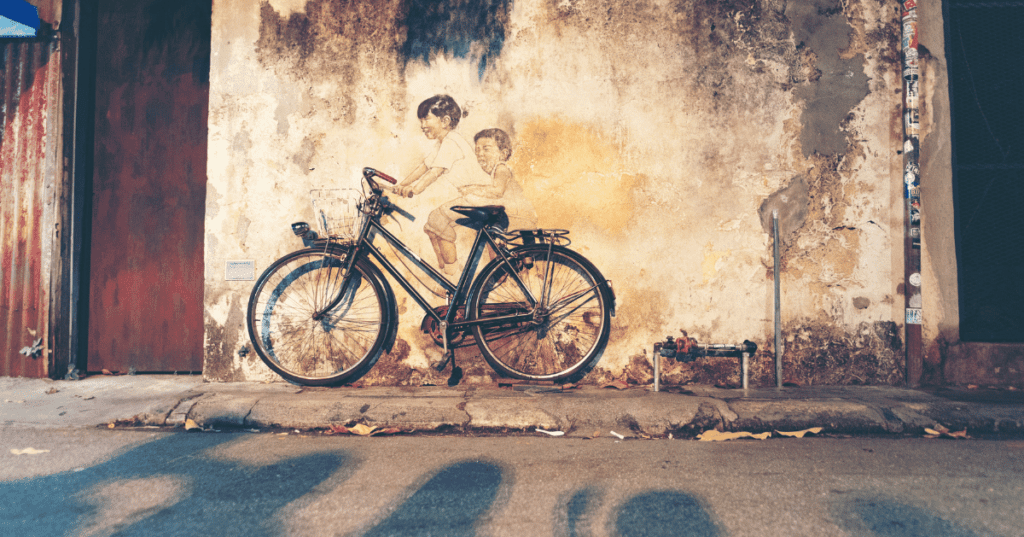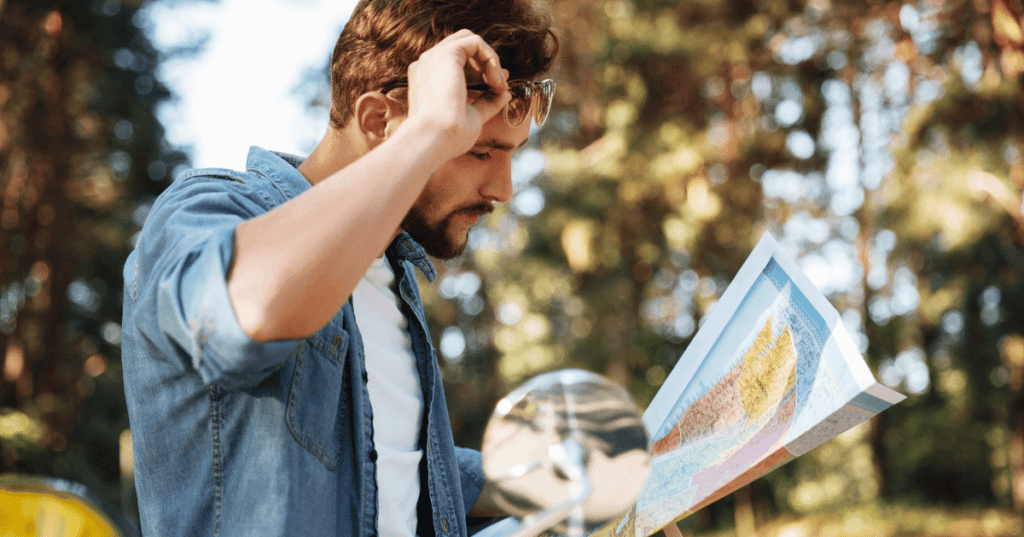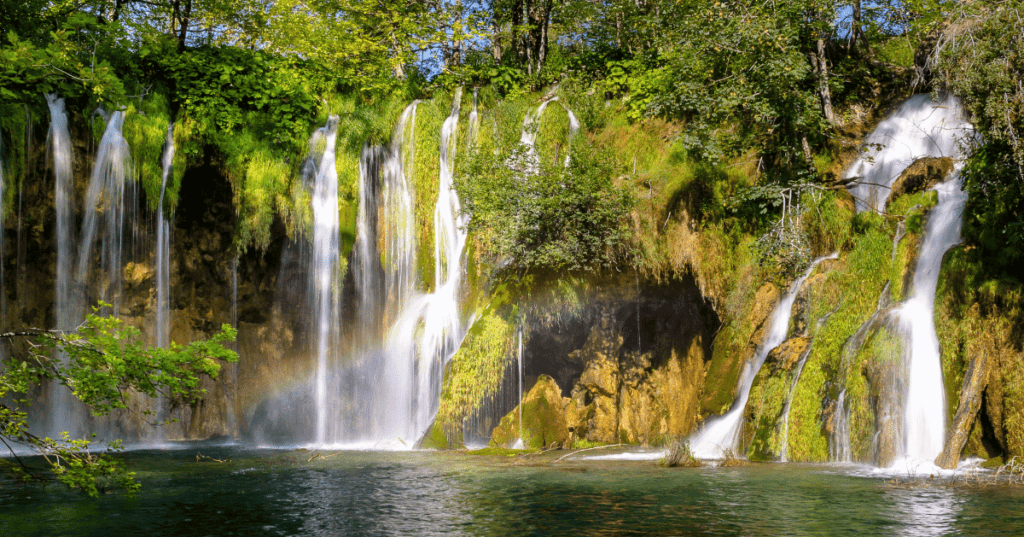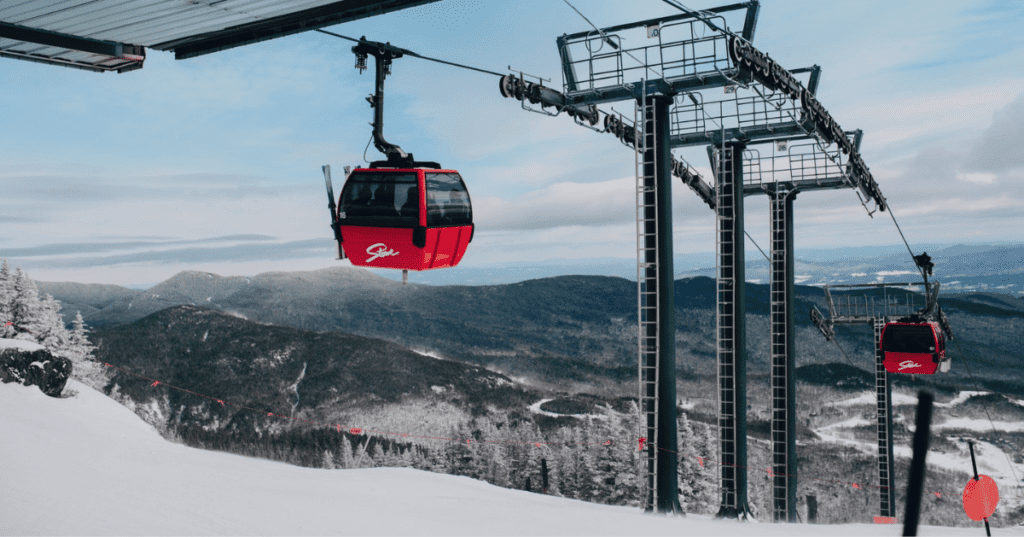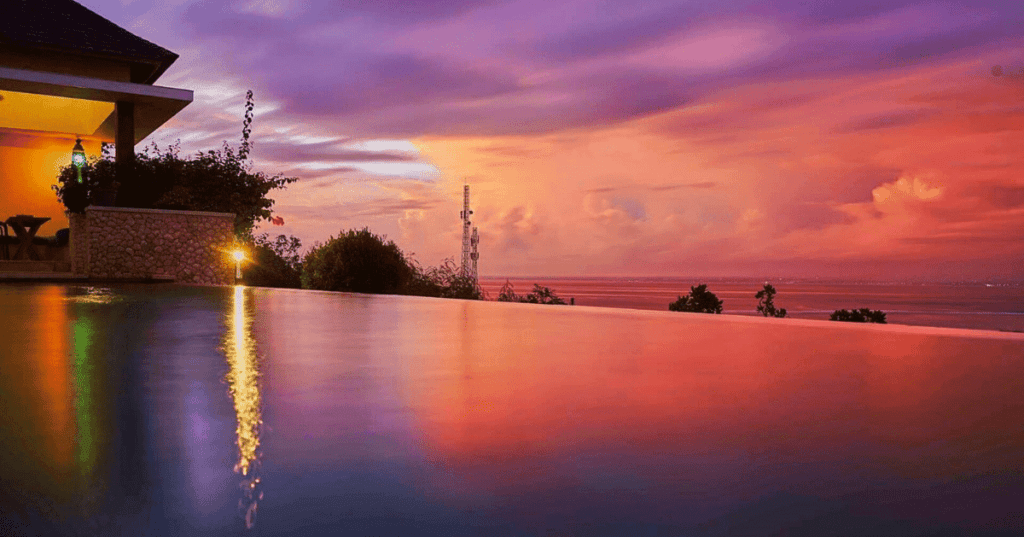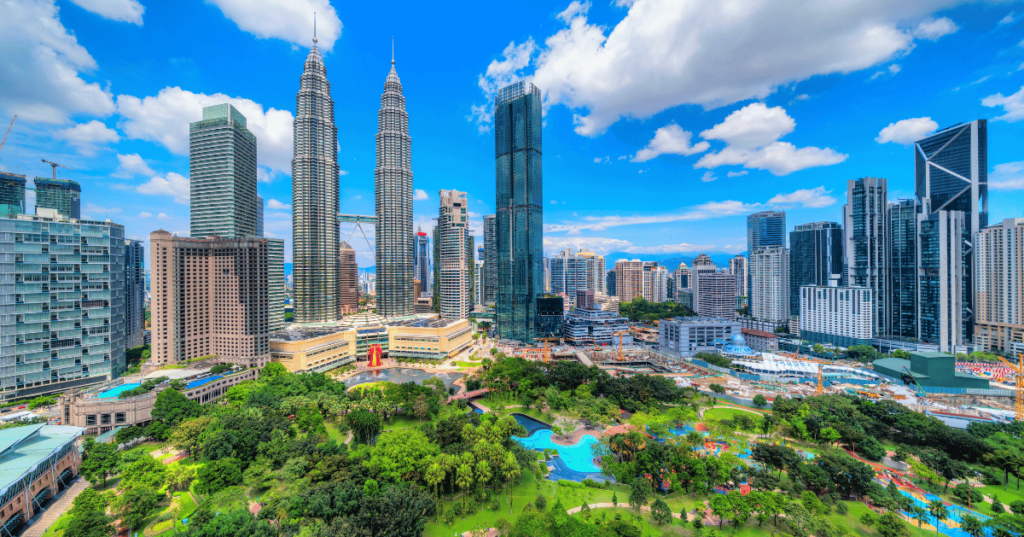If you’re a solo traveler looking for unique experiences, you’ve come to the right place. Penang is known for its vibrant culture, stunning architecture, and delicious food.
But there’s so many things to do in Penang Malaysia and much more to discover beyond the usual tourist spots. This article will guide you through ten of the most unusual things to do in Penang.
Penang is safe, friendly, and easy to navigate, making it an ideal destination for solo adventurers. You’ll find a mix of historical sites, natural wonders, and cultural gems that are perfect for exploring on your own.
Whether you’re interested in history, nature, or simply soaking up the local atmosphere, there’s something here for you. So pack your bags, and let’s dive into the most unusual experiences Penang has to offer.
The Most Unusual Things to Do in Penang Malaysia
Penang is a treasure trove of unique experiences waiting to be uncovered. As a solo traveler, you’ll have the freedom to explore at your own pace and immerse yourself in the diverse attractions this island has to offer.
From lush gardens and vibrant street art to serene temples and bustling markets, there’s no shortage of unusual and exciting things to do. Let’s dive into the top ten unusual activities that will make your visit to Penang truly unforgettable.
#1. Tropical Spice Garden
The Tropical Spice Garden in Penang is a must-visit for anyone looking to experience the rich biodiversity and cultural heritage of Malaysia.
Spanning over 8 acres of lush, tropical rainforest, this garden is home to more than 500 species of flora, including a vast array of herbs and spices that have significant culinary and medicinal uses.
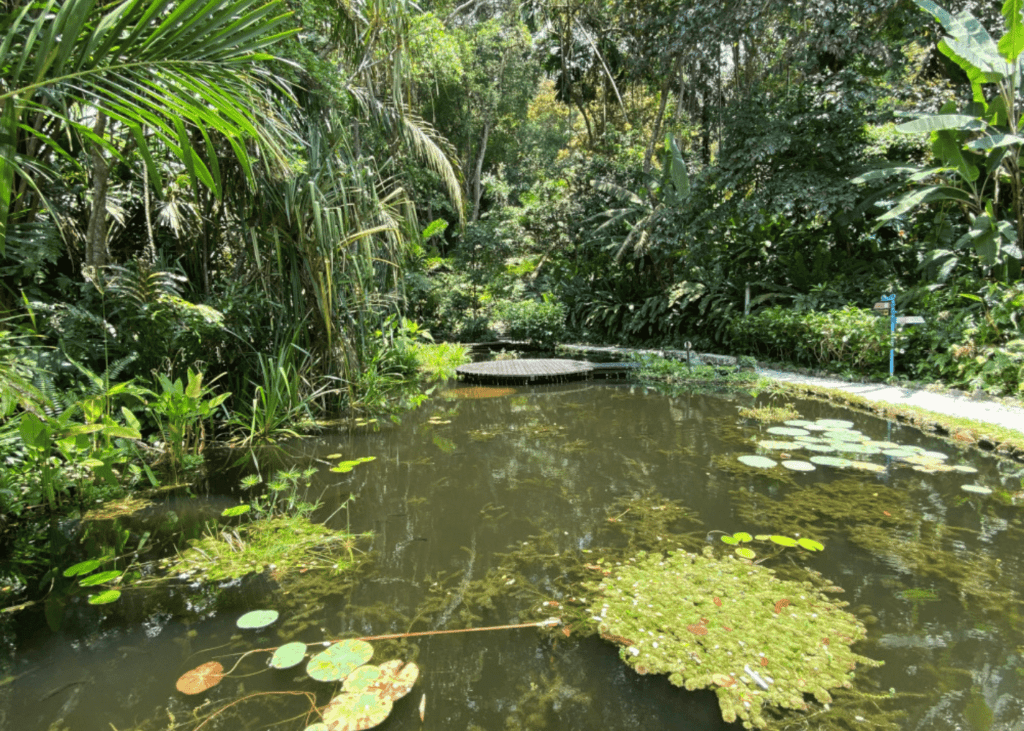
As you explore the garden, you’ll encounter various themed areas, such as the Spice Terraces, the Bamboo Garden, and the Ornamental Garden.
One of the unique highlights is the Poison Garden, where you’ll learn about toxic plants and their historical uses. The garden also features water streams, ponds, and winding pathways that create a serene and immersive environment.
The Tropical Spice Garden is open daily from 9 a.m. to 9 p.m., with the last admission at 5:15 p.m. Admission fees are RM 20 for a self-guided tour with an audio guide or RM 38 for a guided tour.
It’s advisable to book tours and cooking classes in advance. You can reach the garden by taxi or bus, with bus routes 101 and 102 stopping right outside the entrance.
#2. Armenian Street
Armenian Street, or Lebuh Armenian, is a vibrant and culturally rich street in George Town, Penang. Known for its captivating street art and historical significance, it offers a unique blend of art, culture, and history.
One of the main attractions on Armenian Street is its famous street art. The “Kids on Bicycle” mural by Ernest Zacharevic is a must-see and has become an iconic symbol of Penang’s street art culture.
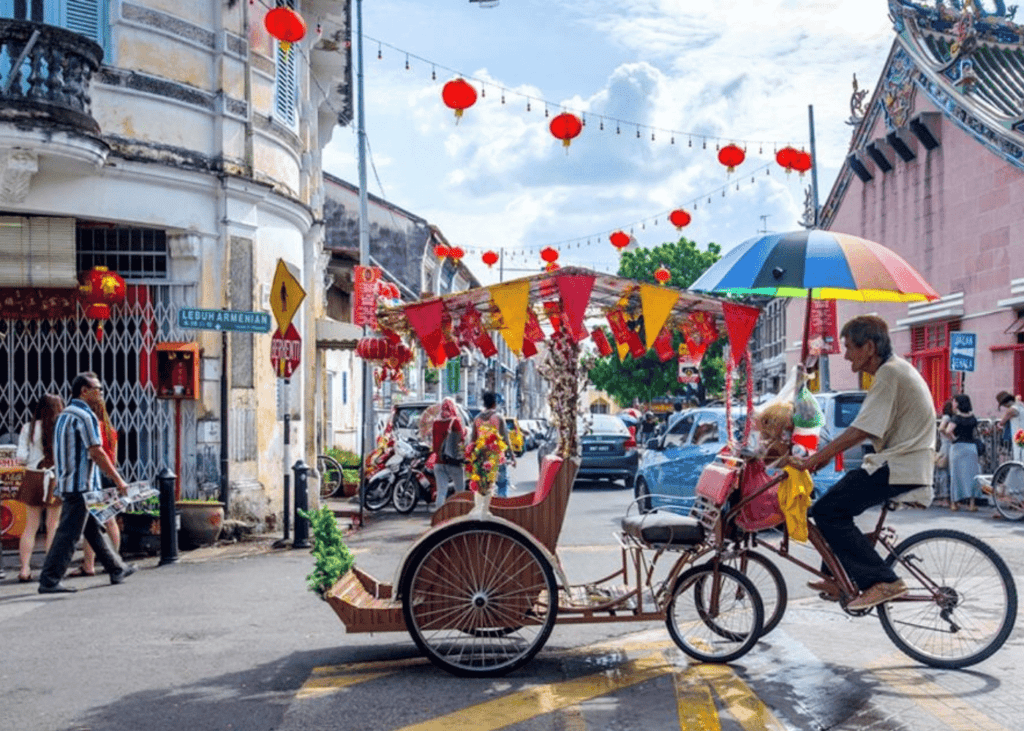
As you walk along the street, you’ll find other murals and iron rod sculptures depicting the history and daily life of the locals.
Armenian Street is also surrounded by historical landmarks, including Chinese temples and clan houses like the Yap Kongsi Temple and the Hock Teik Cheng Sin Temple. These sites offer a glimpse into the rich cultural heritage of the Chinese community in Penang.
There are plenty of activities to enjoy on Armenian Street. You can take a leisurely ride in a trishaw, which provides a unique way to explore the area with a full front view, allowing you to take in the sights comfortably.
If you prefer a more active experience, renting a bicycle is a great way to navigate the narrow streets and discover hidden gems (Penang Foodie).
History enthusiasts will appreciate the Sun Yat Sen Museum, which houses antiques and offers insights into the life of the Chinese revolutionary who once lived in Penang.
Armenian Street is home to a variety of cafes, galleries, and souvenir shops. Edelweiss Cafe is a popular spot offering a mix of Swiss, German, and local cuisine, known for its delicious cheese fondue.
The street market on Saturdays is another highlight, where you can browse local arts and crafts and enjoy street performances.
#3. Kek Lok Si Temple
Kek Lok Si Temple, located in Air Itam, Penang, is one of the largest and most significant Buddhist temple complexes in Southeast Asia. This majestic temple, also known as the “Temple of Supreme Bliss,” is a must-visit for anyone traveling to Penang.
Established in 1891, Kek Lok Si Temple is an architectural marvel that blends Chinese, Thai, and Burmese designs. The temple complex is divided into various sections, each with its unique features.

The most notable structures include the Pagoda of Ten Thousand Buddhas, the Grand Hall, and the giant statue of the Goddess of Mercy, Guan Yin.
If you want to know more about the Kek Lok Si Temple, do check out my complete guide on Kek Lok Si Temple.
Tips for Visiting
- To avoid the crowds and enjoy a peaceful visit, it’s best to arrive between 8:30 am and 9 am.
- While there are no strict dress codes, it’s advisable to dress modestly out of respect for the place of worship.
- Weekends and holidays can be particularly crowded, so plan your visit during weekdays if possible.
#4. Khoo Kongsi
Khoo Kongsi, also known as Leong San Tong Khoo Kongsi, is one of the most iconic clan houses in Penang. This beautifully preserved heritage site offers a glimpse into the rich history and culture of the Chinese community in Malaysia.
Founded in 1835, Khoo Kongsi served as a clan house for the Khoo family, who emigrated from China. The main temple, completed in 1906, showcases elaborate and highly ornamented architecture, symbolizing the glory and success of the Khoo clan in Penang.

The intricate carvings, statues, and murals found throughout the temple reflect the artistry and craftsmanship of the time.
The architectural design of Khoo Kongsi is a marvel to behold. The temple features ornate decorations, including dragons, phoenixes, and mythical creatures, intricately carved into the wood and stone.
The ridge decorations on the roof are particularly striking. Inside, the ceiling and pillars are adorned with vibrant paintings and gold leaf, creating a stunning visual experience.
You can explore various sections of Khoo Kongsi, including a museum that provides detailed information about the clan’s history and the Chinese community in Penang.
The courtyard around the temple includes former clan dwellings, a stage for cultural performances, and an art gallery. The temple is also a significant venue for cultural events, especially during Chinese New Year, when it is beautifully illuminated.
Khoo Kongsi is open daily from 9:00 AM to 5:00 PM. The entrance is via an alleyway off Lebuh Cannon, and the address is 18, Cannon Square, George Town, Pulau Pinang.
The admission fee is RM 10 for adults and RM 1 for children aged 5-12. This clan house is a must-visit for anyone interested in Penang’s heritage and cultural history.
#5. The Floating Mosque (Tanjung Bungah Floating Mosque)
The Floating Mosque of Penang is an architectural marvel that offers a unique experience. Officially known as Masjid Terapung Pulau Pinang, this mosque was completed in 2007, replacing an older mosque that was damaged in the 2004 tsunami.
The mosque’s design blends local and Middle Eastern architectural styles, creating a stunning visual spectacle. It features a prominent seven-storey minaret and a prayer hall that appears to float on the water during high tide.
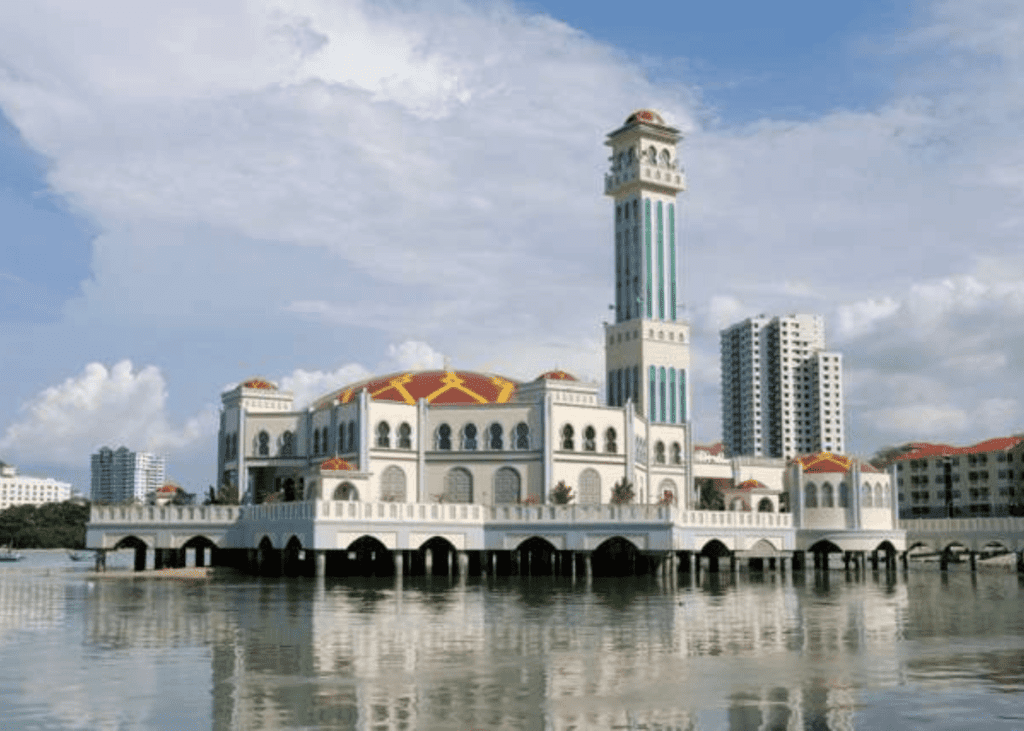
The mosque is built on stilts, giving the illusion that it is floating, which is a significant aspect of its charm.
The Floating Mosque is open to visitors of all backgrounds, although non-Muslim visitors are requested to respect the prayer times and dress modestly. The mosque can accommodate up to 1,500 worshippers, and its serene environment makes it a peaceful place for reflection.
The mosque is open 24 hours a day, with free entry. It is located on Tanjung Bungah Road, easily accessible by public transportation or a short drive from George Town.
Final Words on Things to Do in Penang Malaysia
Penang, Malaysia, offers a delightful mix of cultural, historical, and natural attractions that promise an unforgettable experience.
From the lush greenery of the Tropical Spice Garden and the vibrant street art of Armenian Street to the spiritual tranquility of Kek Lok Si Temple and the architectural splendor of the Floating Mosque, there’s something for everyone.
Whether you’re a history enthusiast, a nature lover, or simply looking to explore new places, Penang has it all. Each of these unique spots provides a glimpse into the rich heritage and diverse culture that make Penang a must-visit destination.
So pack your bags, set your itinerary, and get ready to uncover the many wonders of Penang, Malaysia. Happy travels!
FAQs about Things to Do in Penang Malaysia
What is the best time to visit Penang?
The best time to visit Penang is between November and February when the weather is cooler and less humid, making it ideal for outdoor activities.
How do I get to Penang?
You can reach Penang by air, with Penang International Airport serving various domestic and international flights. Alternatively, you can take a bus, train, or drive from other parts of Malaysia.
What are the must-visit attractions in Penang?
Key attractions include George Town, Penang Hill, Kek Lok Si Temple, Batu Ferringhi Beach, and the Penang National Park.
Is Penang safe for solo travelers?
Yes, Penang is safe for solo travelers. However, like any destination, it is advisable to stay aware of your surroundings and take standard safety precautions.
What is the local currency, and can I use credit cards?
The local currency is the Malaysian Ringgit (MYR). Credit cards are widely accepted in hotels, restaurants, and larger shops, but it’s good to carry some cash for smaller purchases and street food.
What is the public transportation like in Penang?
Penang has a reliable public transport system, including buses and ride-sharing services like Grab. For convenience, you might also consider renting a car.
What local dishes should I try in Penang?
Don’t miss trying Penang’s famous street foods like char kway teow, laksa, nasi kandar, and rojak.
Can I drink tap water in Penang?
It’s generally recommended to drink bottled or filtered water in Penang, as tap water may not be safe for consumption.
Are there any cultural etiquettes I should be aware of?
Dress modestly when visiting religious sites, remove your shoes before entering homes and temples, and use your right hand for eating and handing over money.
What should I pack for a trip to Penang?
Pack lightweight clothing, comfortable walking shoes, sunblock, insect repellent, and an umbrella or raincoat for the occasional rain showers.

